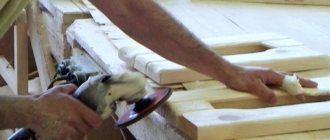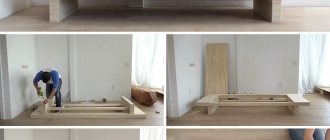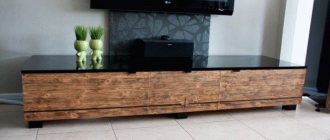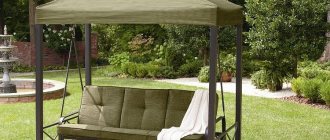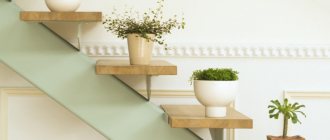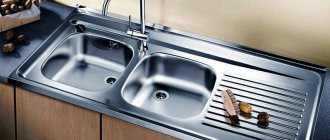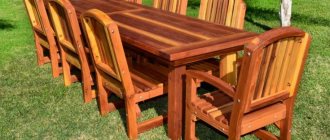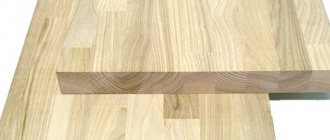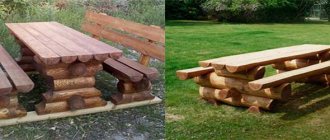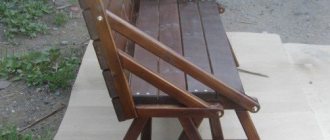The cabinet furniture segment has grown significantly in recent years. At the same time, according to marketers, it continues to remain one of the most difficult sectors of the furniture industry in terms of production, since in the cost structure of finished furniture, raw materials account for more than 50% of all costs. Representatives of the furniture industry themselves tell us how corps workers manage to develop in such conditions, and whether they have any difficulties.
According to the chairman of the NGO “Guild of Furniture Makers of the Krasnoyarsk Territory and the Republic of Khakassia” Alexander Popov, the time has long passed when buyers lined up for ready-made standard furniture and waited for it for months. The presence of great demand, the growth of entrepreneurial activity, the increase in the availability and variety of materials for production, have led to a significant expansion of offers in the furniture market. Therefore, more and more buyers are striving to make their furniture individual, select a specific style, color and texture of materials, and fill the furniture with functionality that meets specific needs. Nowadays the market has a very developed offer of custom-made furniture. Even large factories that produce furniture in batches try to give their products different distinctive features.
Equipment for production has also become more accessible, and it is on this that the capabilities for processing materials depend. Of course, after the rise in exchange rates, all machines, tools and consumables have become more expensive, but there are companies that provide materials processing services, where you can order both a full cycle of processing and manufacturing of furniture components, as well as partial operations if the production base does not allow you to perform certain or other types of work. Experts are an integral part of furniture creation. These include all the people who are involved in the process of creating the finished product - from the order taker, designer, constructor to the direct performer located at the machine and even the assembler. If competent, responsible personnel are selected, there is good equipment that is subject to mandatory technical control, good materials and fittings are used, then the manufacturer will not have any technological difficulties.
Tools, equipment
Even a small enterprise that will be engaged in the manufacture of single pieces of furniture will not be able to get by solely with hand tools. Equipment purchases typically account for the bulk of costs. Experienced furniture makers believe that to produce high-quality products in accordance with all the rules of technology and cabinet furniture production, you cannot do without:
- format-cutting machine for cutting elements of hull assembly;
- edge banding installation for edging parts made of wood boards;
- drilling and additive machine for drilling holes for fasteners;
- drying chamber for drying lumber.
In addition, you will need equipment for glass processing: a sandblasting machine, devices for cutting and drilling sheet glass. Don’t forget about hand tools, which include:
- screwdriver;
- Grinder;
- furniture stapler;
- jigsaw;
- shoe knives for cutting thin materials;
- measuring instruments: tape measures from 2 to 5 m, steel rulers and squares;
- thick scribe awl;
- rubber and metal hammers;
- clamps for fixing parts with a grip of at least 100 mm;
- flat and Phillips screwdrivers of different lengths and thicknesses, hex keys for confirmations, pliers, wire cutters;
- cutters, drills of various diameters, including a Forsnel drill, discs for a cutting machine;
- sanding belts of different abrasiveness classes.
In the process of further work, the need to replenish the fleet of equipment and tools corresponding to the complexity and scale of the tasks being solved will certainly become clear.
Marketing plan
Getting started without a clear marketing plan means putting yourself at risk of going out of business within the first year. Therefore, it must be taken care of long before the opening.
Here are some marketing strategy tips.
- It is worth selling finished furniture in all available ways: through an online store, retail, supplying products to furniture stores for subsequent sale.
- It is imperative to participate in all tenders from local government organizations. Everyone needs high-quality furniture: educational institutions, healthcare institutions, kindergartens and homes.
- On the territory of the enterprise, in the administrative premises, a separate room should be equipped for presenting your products to potential wholesale buyers.
- It is effective to attract attention to the company by sending commercial offers to business centers, banks and other organizations in need of office furniture.
- The factory must have an official website and groups on social networks. For better effect, you can run contextual and targeted advertising. This will help you receive more applications from the Internet.
- When promoting a company, it is advisable to use traditional advertising tools: billboards, banners, banners, leaflets, advertising in newspapers, radio and TV.
All ways to promote a business are good. The main thing is to prove to the consumer that the product being produced is truly of high quality. To do this, you can significantly reduce prices for the first batch of products in order to get feedback from customers.
Design of cabinet furniture and selection of materials
To quickly develop projects for furniture products, special computer programs are used. Today it is not difficult to choose the right software for making furniture, since the market for these software products is extremely large. Many programs are available in a free version, which allows you to save money at least at the initial stage. Some of them allow you not only to develop drawings and visualize them in volumetric form, but also to calculate project estimates for different materials.
At the design stage, the appearance and functional elements of the furniture are determined, the overall dimensions of the product and the materials from which it will be made are selected. Based on the project, fittings and fasteners, decor and inserts, and other details are selected. Drawings of product elements for cutting are made, and an assembly flow chart is drawn up.
Recruitment
A small furniture factory will need:
- Director, whose role can be the individual entrepreneur himself or one of the founders of the LLC.
- Accountant or outsourcing specialist.
- Account Manager.
- Designer and designer.
- Production foreman.
- Support workers.
- Machine operators.
- Workshop workers who will be involved in direct production and assembly.
It will cost about 300,000 rubles monthly to pay a staff of 12 people. If it is a small company, then 4-5 people are enough.
Cutting blanks
Modern furniture, as a rule, is made from wood panels, so an important stage in its production is cutting - the process of cutting out parts from a solid chipboard board. It is best to do this using a cutting machine, since it will cut the slab with maximum accuracy. The cutting is carried out in accordance with the drawing, the chipboard sheet is pre-marked to the dimensions of the parts. Curvilinear sections are cut with a jigsaw.
Machining the ends of parts
The outer ends of the parts must be covered with a special edge tape, which will cover the unaesthetic cut and serve as an obstacle to moisture getting inside the chipboard. Pasting is carried out on a special edge banding machine, where gluing occurs with heating, which means that the requirements of cabinet furniture manufacturing technology .
In the absence of a machine, the edge is heated with an iron or an industrial hair dryer, but in this case there is no talk of decent quality due to uneven heating. On the machine, simultaneously with gluing, the edge is trimmed if its width is too large. When gluing with an iron, trimming is done manually with a shoe knife, which sometimes leads to the formation of burrs on the edge. Therefore, a mandatory step in gluing the edges is sanding the cuts with fine sandpaper until completely smooth.
Technological process of furniture manufacturing
Introduction
Modern furniture is influenced by architecture. The organization of interiors of residential and public buildings is largely determined by the rational furnishing of premises, types and design of furniture. As a result, the share of built-in and stationary furniture in production annually increases, related to the place of its installation, engineering solutions of buildings, and their design. Furniture as a consumer product is also strongly influenced by fashion.
In the total volume of furniture production, the percentage of artistic furniture of modern forms, as well as the use of classical forms of stylish furniture, is constantly increasing. In artistic furniture, along with traditional methods of decorative design of products, the color and texture of wood, mosaics on wood, profiles of various shapes, new methods of decoration are widely used: imitation of mosaics and wood carvings, painting, decorative glass, decorative fittings, artificial leather.
However, regardless of the forms and methods of decorative solutions for furniture, the design and technology of its manufacture must comply as much as possible with industrial production methods.
At the same time, at certain stages of the furniture manufacturing process, highly skilled manual labor is used using hand tools, for example, in work related to decorating artistic furniture. The degree of mechanization and automation of furniture manufacturing depends on the design of the product, the number of manufactured products, the duration of their production, and the level of organization of production.
The use of sheet materials (boards, plywood) allows one to reduce the labor intensity of manufacturing products, since the enterprise receives these materials in finished form. In addition, thanks to the isotropic structure and plywood construction, they practically do not change their dimensions during the operation of the products and do not require additional measures to ensure their dimensional stability.
The purpose of this work is to consider the technological process of furniture manufacturing, as well as the basic financial calculations in this process.
Tasks:
1. identification of materials and accessories for furniture manufacturing;
2. study of process technology;
3. description of woodworking machines and their parts;
4. description of the structure of the technological process;
5. calculation of manufacturing costs.
1. Materials used for the manufacture of cabinet furniture
1.1 Selection of raw materials and materials
The main raw materials for furniture production are particle board (chipboard) and fibreboard (fibreboard). Chipboards are classified according to their hardness: hard, very hard, medium and soft. In furniture production, only hard grades of chipboard are used. Therefore, it would be a good idea to inquire about the hardness of the selected particle board. It should be noted that chipboards are produced in various thicknesses, and for our production of cabinet furniture, chipboards with a thickness of 16 mm will be used. For the production of desk drawers, chipboard of a smaller thickness, which is 12 mm, will be used. The thickness of the chipboard was chosen based on a study of sold cabinet furniture, which is presented in stores and at exhibitions. In addition, in the production of cabinet furniture, fiberboard will be used to cover the back walls of furniture and the bottom of drawers of bedside tables. In addition, we need edging material to apply it to the edges of furniture parts, as well as furniture fittings and fastening material for assembling furniture [12].
The next feature of the selected chipboard is its surface, which differs in its structure. Sanded chipboard is available for sale, which has a smooth surface and is intended for applying finishing materials to it. Chipboards with already applied material are available for sale, which can be coated on one or both sides. Basically, chipboard is covered with laminate or natural veneer. In our example, we will not consider chipboards lined with natural veneer, since products made from this material will be more expensive than those made from laminated chipboards [3, 14-15]. For our production we will use only laminated and coated chipboard on both sides. If we consider the option when we purchase non-laminated chipboards for production, then we will need to create our own production for chipboard lamination, and this is a completely separate production that requires additional investments. This option can only be considered in large production conditions.
As for the fiberboard that will be used to cover the back wall of cabinet furniture, it must have a smooth surface on both sides. This gives the manufactured cabinet furniture an attractive appearance, and the buyer can place such furniture not only against the wall, but anywhere in the room. The fiberboard that will be used for the bottom of the drawers at the bedside table should have only one smooth surface, since the other side remains invisible. It should also be taken into account that for each furniture model produced, its own fiberboard color must be selected. When choosing fiberboard, it is necessary to take into account the characteristics of the furniture models produced.
When choosing the necessary raw materials and materials for production, it is necessary to analyze raw material suppliers in order to select the most profitable and economical option for the supply of raw materials and materials. It is necessary to take into account the location of the supplier, since transport costs increase at a great distance from production. To choose the most economical transportation option, you should consider different modes of transport. When working with one supplier, you should always have two or three more companies in stock with which you can begin to cooperate if the terms of supply of raw materials and supplies by the main supplier change.
Using the cabinet furniture drawings we have, we can determine the dimensions of the parts. Therefore, we will consider in detail what parts the cabinet will be assembled from (Table 1).
Table 1 - Number of parts
| Type of material | Number of parts, pcs. | Part size, m. | Part perimeter length, m. | Part area, sq. m. |
| Chipboard - 16 mm. | 12 | 32,972 | 4,376 | |
| Side panels | 2 | 1,91 ? 0,345 | 9,02 | 1,318 |
| Shelves | 4 | 0,86 ? 0,345 | 9,64 | 1,187 |
| Int. shelves | 2 | 0,86 ? 0,328 | 4,752 | 0,564 |
| Doors | 4 | 0,435 ? 0,76 | 9,56 | 1,307 |
| Fiberboard | 1 | 5,22 | 1,337 | |
| Back wall | 1 | 1,91 ? 0,70 | 5,22 | 1,337 |
| Total | 13 |
1.2 Fittings
Metal products in joinery mainly include furniture fittings, fasteners, supports and moldings of various profiles. The range of furniture fittings is given in Table 2.
Table 2 - Nomenclature of furniture fittings
| Group | View |
| Loops | Card, piano, pin, pivot, four-hinged, double-hinged, trellis, other types |
| Mechanisms for transforming, changing and fixing furniture elements in different positions | For sofa beds, armchair beds, armchairs, chairs, cabinet furniture products, beds, tables and other types of furniture |
| Guides | For doors and glass, for drawers, for trays and cassettes, for sliding table tops, for other types |
| Ties | Screw, eccentric, angle, wedge, lever, other types |
| Connecting products | Squares, plates, bosses, flanges, pads, separate springs, dowels, clamps and other types |
| Special fasteners | Screws, bolts, nuts, studs, pins, nails, caps, buttons, staples, washers and other types |
| Locks | Levers, with cylinder mechanisms, with rods, other types |
| Valves | Spring, springless, other types |
| Latches | Spring, springless, magnetic, other types |
| Brackets | Flexible, with lock, without brake, with brake, other types |
| Holders | Shelf holders, rod holders, mirror holders, other types |
| Supports | Non-adjustable, sub-legs, adjustable, swinging, support buttons, heels, caps, hooves, other types |
| Pendants | Unregulated, regulated, other types |
| Pens | Staples, buttons, strips, shells, rings, profiles, other types |
| Keys | Locks with cylinder mechanism, lever locks, other types |
| Decorative elements | Rosettes, ornaments, veins, frames, lattices, keys, other types |
| Products for closing edges, cracks, openings | Layouts, plugs, edgings, grilles, keys, other types |
| Containers made of non-wood materials | Trays, boxes, tanks, other types |
| Barbells | Stationary, retractable, rotary, tie holders, other types |
| Cassette | Retractable, hinged, rotary, inset, other types |
| Hooks | Single-horn, multi-horn, including double-horn, other types |
Nails, screws, screws and bolts are used as fasteners.
Decorative fittings made of metal, wood and plastics are often used in joinery and furniture products. Decorative elements are also a component of the decoration of furniture: rosettes, veins, ornaments, frames, grilles, keys, etc. [1, 39-40]
Decorative (patterned) glass and mirrors are widely used in carpentry and furniture products.
In furniture products, profile molded products made of plastic are used: layouts, edgings, sides, etc.
Layouts are used to decorate the edges of panel furniture elements. Layouts can be one- or two-color. The shape and color of the layout are established by the design documentation for the product. Connecting strips are used when joining sheet materials.
Cords and tubes are made from plastics (polyvinyl chloride) by extrusion [4, 37].
With the help of fittings, a movable and fixed connection of furniture parts is ensured, as well as the interaction of furniture with a person and his home. In the industry standard “Furniture accessories. General technical requirements” provides a classification of furniture fittings products, which includes more than 110 types. These are front and fastening fittings, various hinges, ties, shelf and mirror holders, latches, handles, as well as decorative elements, transformation mechanisms, wheel and swivel supports, and guides. It should be said that in the manufacture of furniture, various glass products, plastic and metal containers, dish dryers, mirrors and other products related to furniture components are also used. In the manufacture of fittings and components for furniture, various materials are used: plastics, metals, wood and their combinations. The surface of products is polished, painted, including with powder paints, metallized using vacuum deposition, galvanoplasty and other technologies.
All stages of designing and manufacturing furniture are associated with fittings. Properly chosen fittings have a positive effect on the architectural and artistic design of furniture, the organization of the technological process for manufacturing furniture, the strength and durability of furniture, and the ease of its use. And if poorly designed furniture can hardly be saved with good fittings, then competently designed furniture and correctly chosen fittings can be transferred to a higher design and, as a result, consumer level.
Selection and installation of accessories
The parts are marked for subsequent drilling of mounting holes, and then the drilling itself is carried out. When measuring distances, high accuracy is necessary so that later, during assembly, there are no distortions. After marking, the holes are drilled on a drilling machine, which does not allow the drill to be deepened beyond the required depth. The holes are thoroughly cleaned of dust and sawdust.
The correct choice of fittings is extremely important when making furniture, because the functionality of the product depends on it. Doors should open easily and close securely, drawers should pull out without distortion or getting stuck. The design of the fittings is chosen in accordance with the overall style of the furniture. The fittings are fastened using a screwdriver.
Assembly of cabinet furniture
Unlike the technology for manufacturing upholstered furniture , which includes cutting and sewing upholstery, cabinet furniture consists only of solid elements, for assembly of which metal fasteners and wooden dowels are used. It is important that workers follow the established order of connecting parts. First, the frame elements are connected, then the back walls are attached to them, mirrors and glass inserts are installed, and the fittings are checked for correct fastening. Then they install retractable elements - drawers, roll-out shelves, etc.
Compliance with all requirements of cabinet furniture production technology is the key to high-quality assembly. Customers will definitely appreciate the quality and impeccable appearance of the products, which will very soon have a positive impact on the number of applications and the growth of the furniture company’s profits.
Premises for office, workshop and warehouse
The optimal room area is 500 m2.
An office and a showroom will be located on 50 m2. On 100 m2 there will be a warehouse for storing raw materials and finished products. The remaining 350 m2 will be used for the workshop.
The cost of renting such a premises will be about 200,000 rubles per month. But the final price will directly depend on the region, location and area.
The following requirements apply to the premises of furniture factories.
- Availability of water supply, sewerage, air conditioning systems.
- Connection to a three-phase electrical network 380 W.
- All rooms are located on the ground floor.
- Availability of loading ramps and convenient access roads.
- Normal humidity, corresponding to the rules for storing wood and finished products.
- The temperature in the warehouse and workshop premises must be constantly maintained within 18-20 °C.
- It is mandatory to have fire extinguishers, working fire extinguishing and alarm systems.
Before the opening of the enterprise, you need to contact the State Fire Inspectorate, which will inspect the premises and issue the appropriate certificate. It is also worth remembering about the SES and Rospotrebnadzor - these authorities must also conduct inspections and issue work permits.
